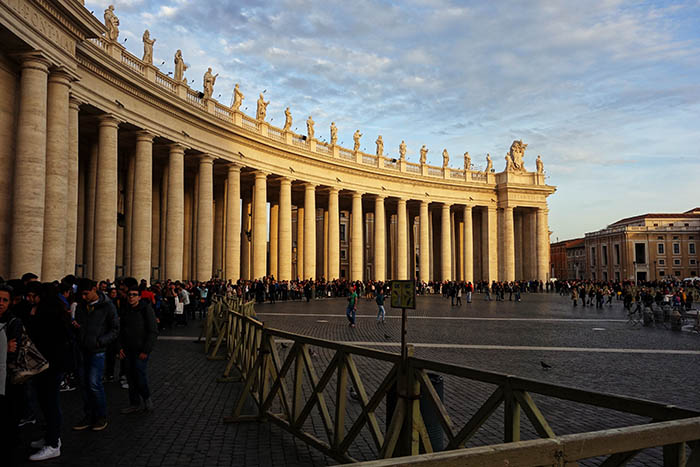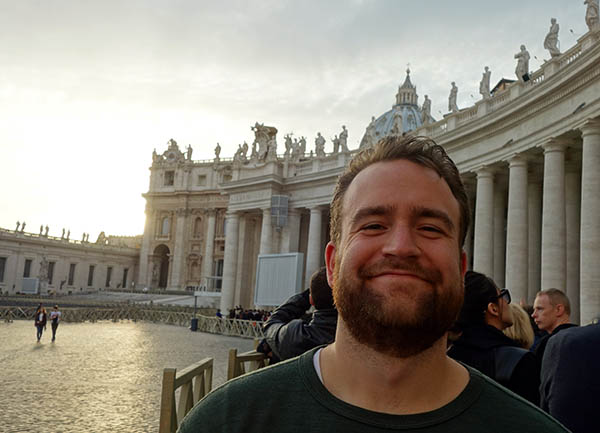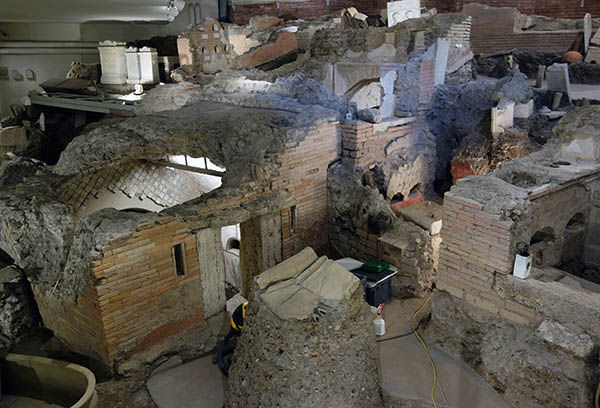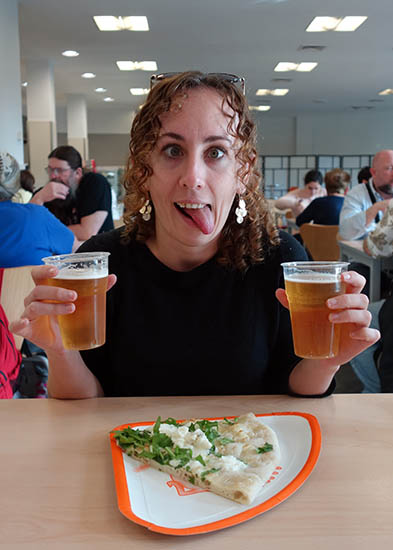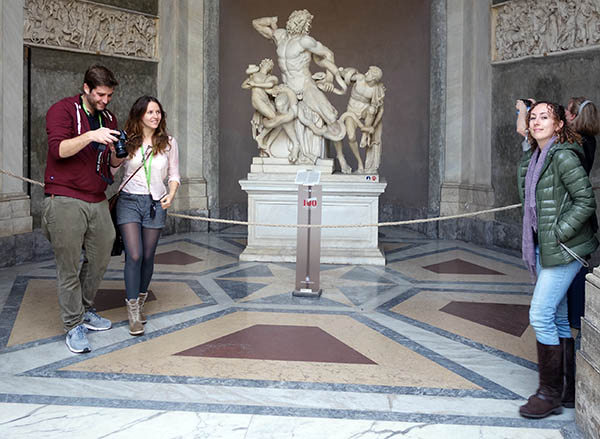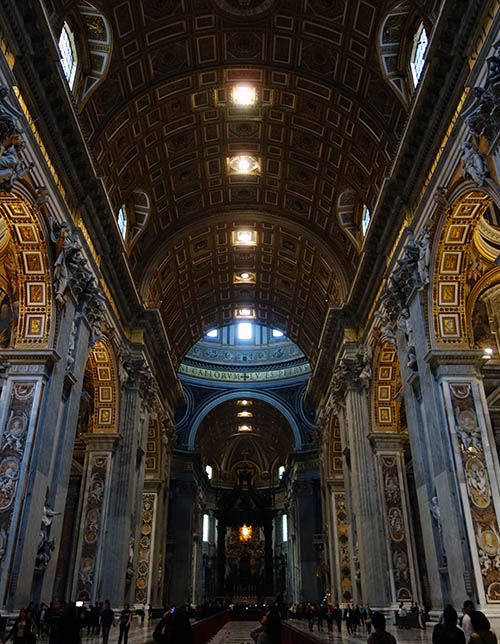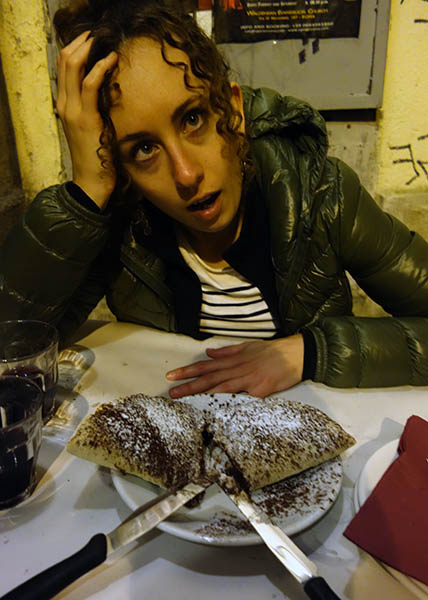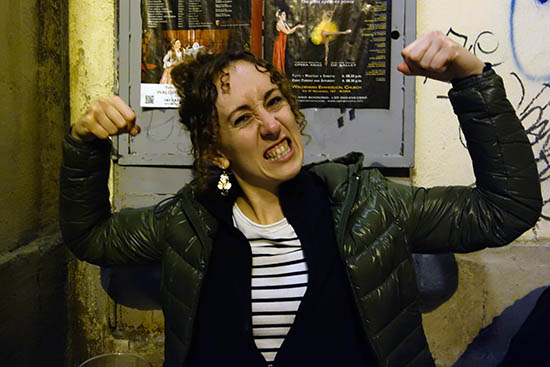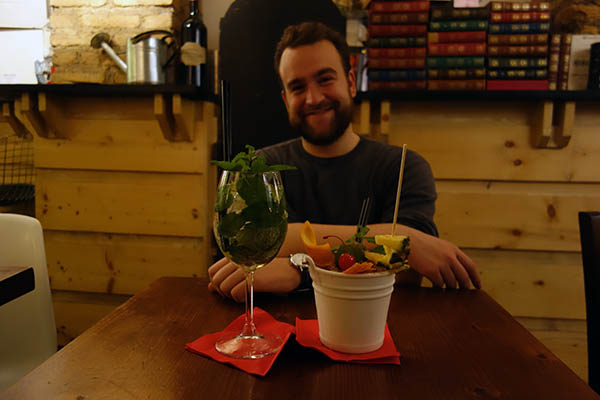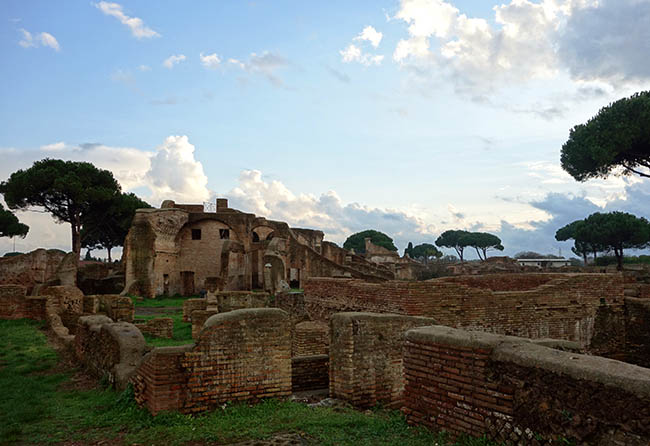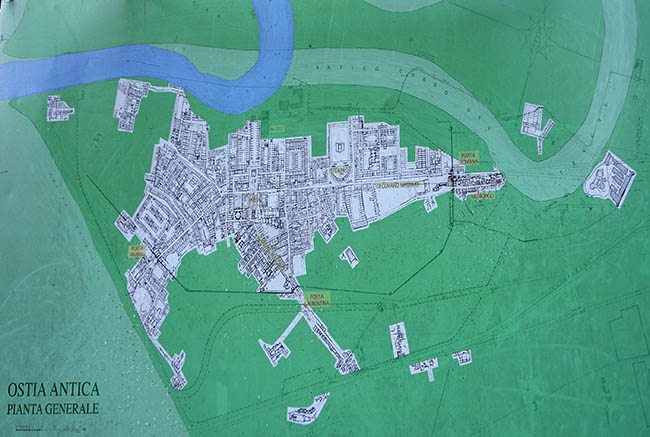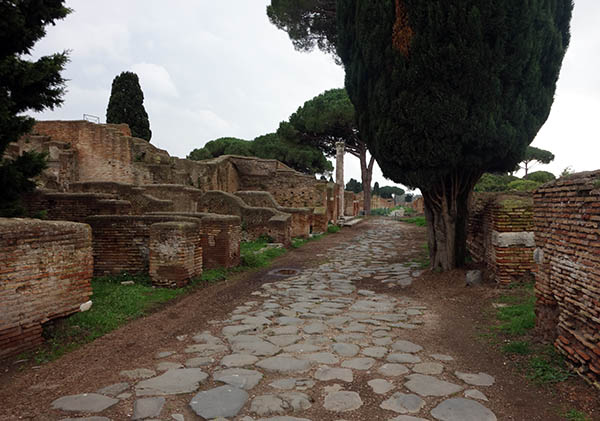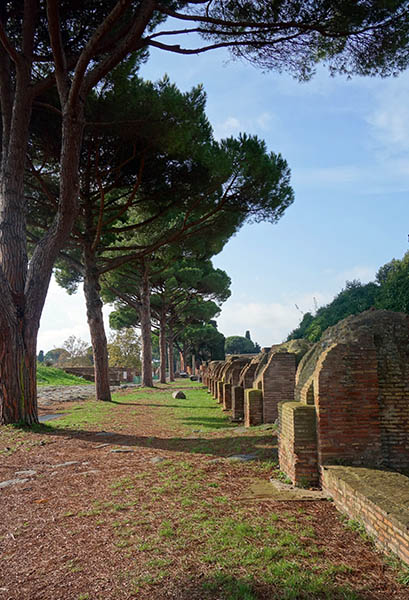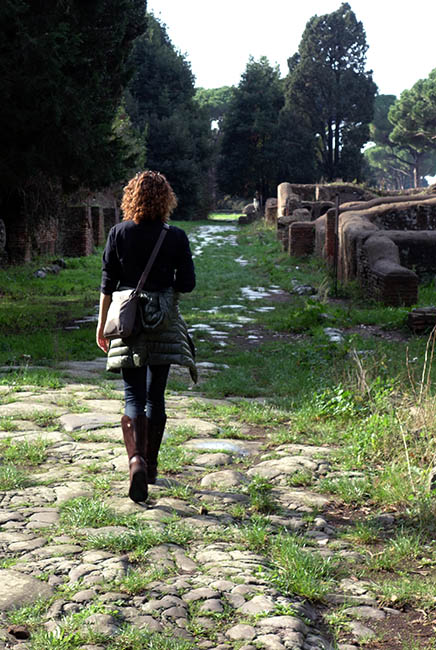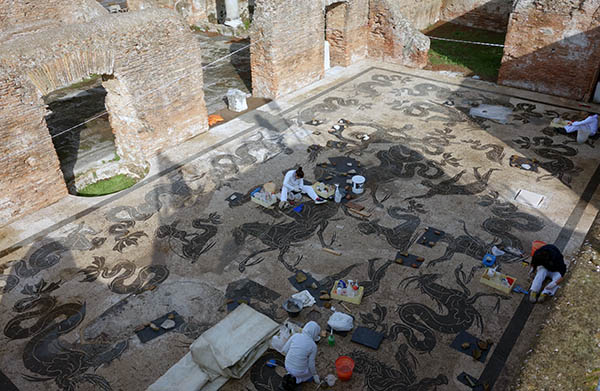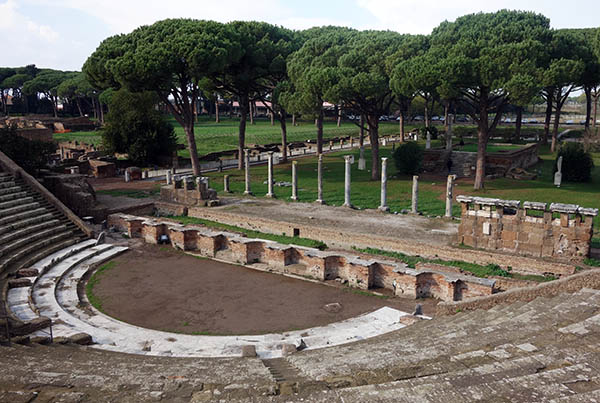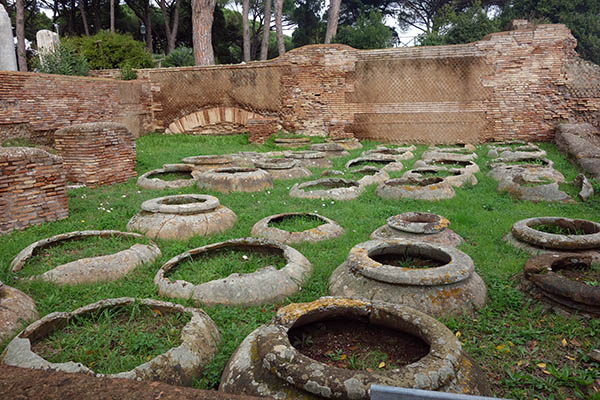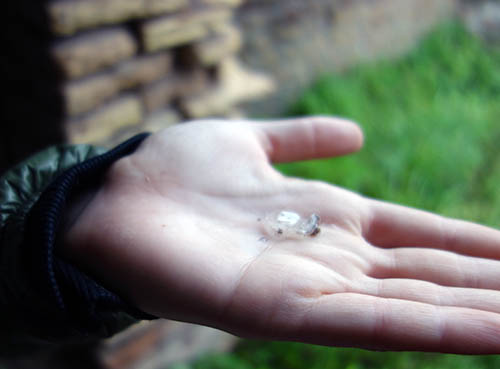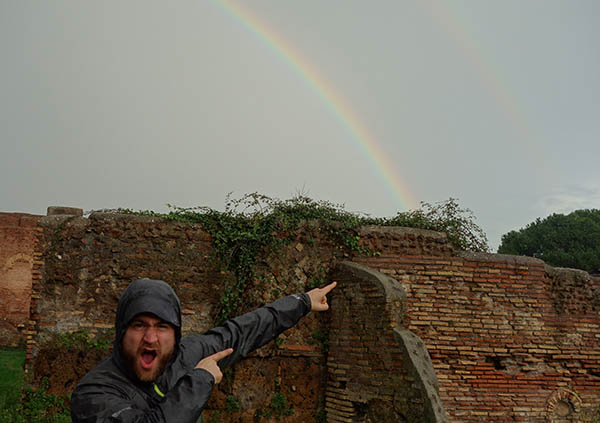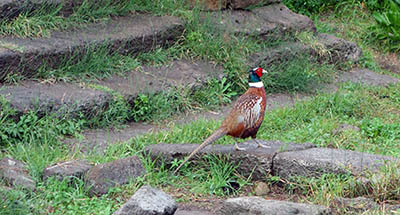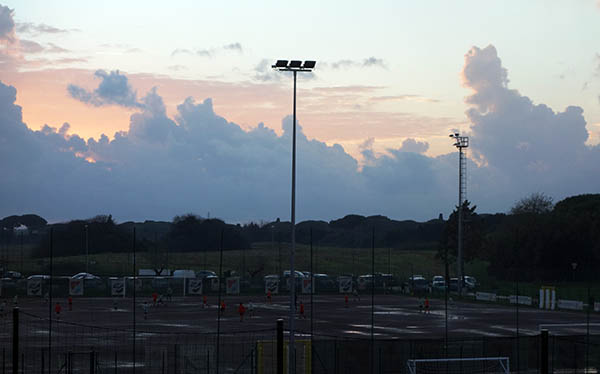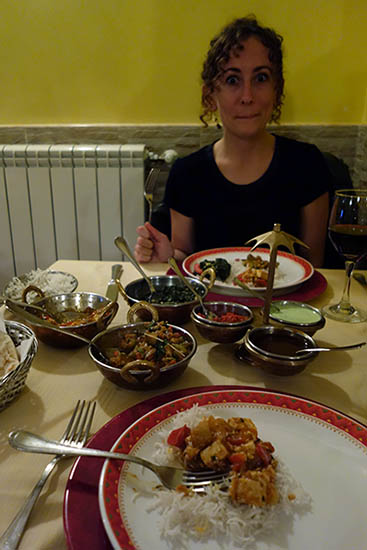After almost a week in Rome, we still had one sight left: the Vatican. Is it in Rome? Well, kinda. Technically, it’s not, but it’s more or less embedded in the city.
Vatican City is the smallest country in the world. It’s 100 acres, 1/8 the size of Central Park. There’s some gardens, but much of the country is covered by museums and St Peter’s Cathedral, the largest church building in the world.
We’d gotten some advice from fellow tourists on our Tuscan wine tour, and purchased a tour of the Vatican necropolis: this allowed us to skip the long entry line that snakes outside the Vatican walls. The whole Vatican neighborhood is fascinating – more diverse groups of people than just about any site, and lots of nuns and priests. It felt different from the rest of Rome.
Our tour was pretty bad. Certainly the worst tour we took in Italy. Our guide was an elderly German lady, with a lamentable sense of humor (the only smile or laugh we got out of her was when she saw a seagull sitting on the head of a statue in the Vatican gardens, which she considered hilarious). I was pretty disappointed in this, as I’d heard good things about the tour and the necropolis in particular.
The necropolis was pretty cool, but I think we had a different perspective on it after our tour in Ostia Antica the day before. There are several necropolises in the Vatican, representing Roman Empire-era burials. The necropolis we saw was discovered when the Vatican tried to increase the depth of its parking garages. It functions as a sort of combination museum/excavation, with archaeologists actively digging out the graves and memorials. Visitors walk on airy corridors suspended above skeletons and mausoleums. There was some sense of “been there,” because we’d seen something similar outside of Ostia. But on the other hand, it was a chance to see a much better-preserved site, one with everything pretty much intact. Most interesting was that the necropolis was in several haphazard layers crisscrossing like an MC Escher painting: a mudslide would cover one layer and people would build a new layer above the previous one.
After the (frankly exhausting) tour, we took a break and went to a Vatican cafeteria. Imagine my shock at discovering that they served beer right in the cafeteria. Time to get hammered in Vatican City!
Next stop were the museums. There’s an awful lot of these in the Vatican, and we decided to rush through them. We’d been viewing museums for two weeks, after all. And there was a lot to see.
Of the sculptures and paintings, I was most excited to see the Laocoon Group. I’d somehow imagined that this sculpture was enormous (I’d pictured it set atop the temple of Berlin’s Pergamonmusem. But the sculpture is roughly life-sized: tiny compared to my expectations.
Of course, the highlight of the museum section is the Sistine Chapel. It’s woven into the museums: you go down some stairs and then WHAM, Sistine Chapel. The most peculiar part of the Chapel is that there’s no photos allowed. Which sounds nice, but security guards are constantly running around yelling at people not to take pictures, which is almost more disruptive than if they took pictures to begin with. The walls of the room are ringed with benches, and we were lucky enough to grab a seat while we listened to a Rick Steves audioguide.
It’s damn exhausting looking at the ceiling for 20 or 30 minutes and a literal pain in the neck. Michelangelo was supposed to have painted the whole thing standing on scaffolding – not laying down. But then, he was a weird guy: he never showered or bathed, and wore his boots to bed, never taking them off, until they fell apart. And he was a real dick.
Anyway, the Sistine Chapel is great, and it’s both different from and similar to how you might imagine it, and well worth a stop if you just happen to find yourself in the Vatican…
Our final tourist sight for the day was St Peter’s Basilica. This is the largest church building in the world. Entry is free, but the line is huge. Luckily, the weather was stunning, and there’s a big courtyard in front used for Papal addresses with lots to see (a photo of this is at the top of the post).
I can say that St Peter’s was undoubtedly the most awe-inspiring building I’ve ever been in. Like the Mines of Moria, or any of those fantasy paintings with people inside unbelievably large structures. It was so large that clever Renaissance steps were taken to combat perspective and make it feel smaller than it actually is. For instance, sculptures are made larger the higher they are, to make them appear closer. The first few European cathedrals I visited felt large… but this was just on a different scale. I couldn’t get used to it.
And to top it all off, Michelangelo’s Pietà is inside. It’s really as beautiful in person as you’d expect. It brought me back to my 7th grade world culture class. The backdrop behind the sculpture was exactly the same, like a school textbook left over from the 1970s.
Leaving the Vatican, we returned to our home base of Trastevere. We’d had some of the best food of our trip here, and why not have something we knew we liked on our last night in Rome?
First stop was the pizza place we’d been to on our first night. We made an RSVP, grabbed a beer around the corner, and returned to sit at a table outside the restaurant. A little chilly, but the food was good (potato pesto pizza, and a 5 cheese pizza). For dessert, we split a Nutella calzone.
Then, around the corner to Baylon Cafe, the place where the bartender invented drinks for us (or, at least, tested drinks on us). It wasn’t quite up to the previous experience, but these still the best drinks I’d had. I’d have to say my favorite was an apricot drink with cashews on the rim. Thus fortified, we returned to our apartment to prepare for our last day in Rome, and our return to Milan.
